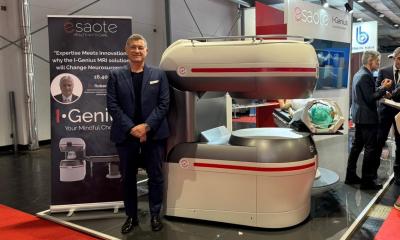BrainSuite brings Günzburg neurosurgeons new tumour treatment options
37% of surgical outcomes could be improved with an intra-operative MRI, according to a clinical study at Erlangen University
Surgeons at the Department of Neurosurgery Ulm University/Günzburg District Hospital have begun to use the newly installed BrainSuite iMRI, a digitally integrated neurosurgical operating theatre (OT) that combines image-guided surgery (IGS), high-field intra-operative Magnetic Resonance Imaging (iMRI), visualisation and comprehensive OT data management.

The system is comprised of products from a number of companies: Siemens high-field MRI; BrainLAB’s image-guided surgery system; a Zeiss microscope and Trumpf operating table, plus other components. In addition, the surgical team accesses patient data from the hospital’s PACS via the digital data management system BrainSuite Net.
‘BrainSuite offers us new treatment options for a broad range of indications including benign and malignant brain tumours and tumours of the pituitary gland,’ Professor Christian Wirtz, medical director at the Department of Neurosurgery, explained. ‘The precise imaging combined with surgical navigation helps to make complicated surgeries safer. Functional and AVM cases also can benefit from the intra-operative imaging capabilities. Patients appreciate that we can control tumour resection during surgery faster and with higher security.’
The integrated navigation system links real-time, intra-operative HD images with the spatial position of the surgical instruments, allowing more accurate determination of the tumour location and amount of diseased tissue removed.
‘In brain surgery, typical risks include injury to critical structures and consequential damages. It is often impossible to differentiate between tumour and healthy tissue with the naked eye. BrainSuite iMRI enables surgeons to reduce these risks by identifying critical functional areas and pathways within the brain during the procedure with MR imaging, allowing them to reach a tumour more efficiently and remove it more completely.,’ explained BrainLAB AG. ‘The resection of a tumour can also lead to anatomical changes during surgery due to tissue movement (or brain shift). Consequently, the accuracy of pre-operative MRT data decreases during the course of a surgery. The combination of surgical navigation and intra-operative MRI provides surgeons with up-to-date information enabling them to remove tumours precisely.’
In Germany, similar neurosurgical operating theatres from BrainLAB are in clinical use in Erlangen and Hanover. Twenty-four BrainSuite iMRIs are currently in neurosurgical use worldwide.
BrainLAB solutions allow expansion from a single system to operating suites to digitally integrated hospitals covering all subspecialties, from neurosurgery, orthopaedics, ENT, CMF to spine & trauma and oncology. The privately-owned firm, which employs 1,000 people in 16 offices across Europe, Asia, Australia, North and South America, has installed 3,300 systems in over 75 countries.
Details: www.brainlab.com
01.05.2009











